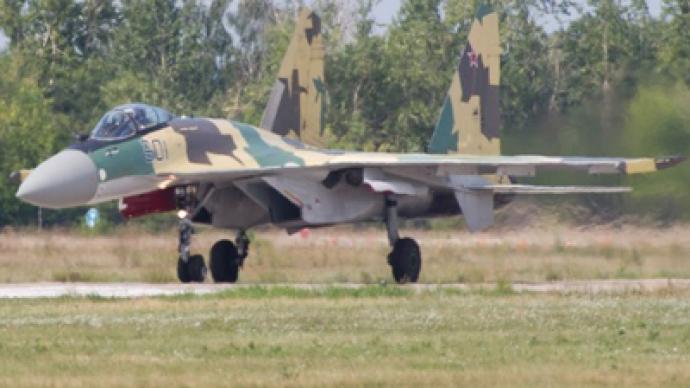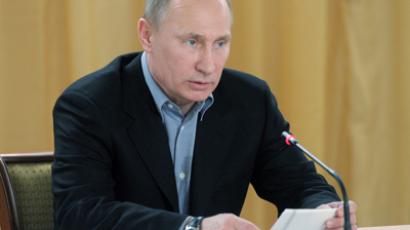China ‘close to buying $4 bln worth’ of Russian top interceptors

Russia and China are close to signing a US$4 billion arms contract, according to a media report. Beijing wants to purchase 48 Sukhoi Su-35 super-maneuverable multi-role interceptors, which are among most advanced Russian combat aircraft.
Most of the terms of the prospective contract, which may become the biggest arms deal between Russia and China in a decade, are already agreed upon, reports Kommersant daily citing sources close to the talks. The price for the jets will be around $85 million apiece, but may yet change.
China’s interest in Su-35s was first hinted in 2008 during the Air Show China exhibition. Insider information that talks on such a deal may start surfaced in 2010, but only in February 2011 was it confirmed officially. Back then Aleksandr Fomin, deputy director for the Federal Service for Military-Technical Cooperation said the offer to buy the aircraft was put on table in 2011.
Kommersant says the biggest obstacle to sealing the deal now is Russia’s insistence on a legal guarantee that China would not try to reverse-engineer the technology used in the aircraft. China already did this with Su-27, Su-30 and Mig-29, making them into domestic analogues called J-10, J-11 and FC-1 respectively. They also used a test version of Su-33 obtained through Ukraine to create their J-15 jet. The latest such incident is the copycatting of Su-30MK2 into the J-16 aircraft, the newspaper says.
The Sukhoi Su-35 is a 4++ generation long-range interceptor jet. It has maximum speed of 2,390 km/h and range of 3,400 kilometers. It is armed with 30mm cannon and has 12 wing and fuselage stations for up to 8,000 kg of ordinance, including air-to-air missiles, air-to-surface missiles, rockets, and bombs.
China’s imports of Russian arms have been decreasing over the years, as the country developed its own defense industry. Moscow is concerned that Beijing could soon become a major competitor in the traditional markets like Middle East and Latin America.
Chinese copies of the Russian aircraft may be technically inferior, but are sold several times cheaper than the originals. For instance, in a 2009 tender from Myanmar, Russia offered Mig-29s for $35 million apiece, while China offered FC-1s at $10 million. The contract however went to Russia, but the trend cannot but worry Moscow.













